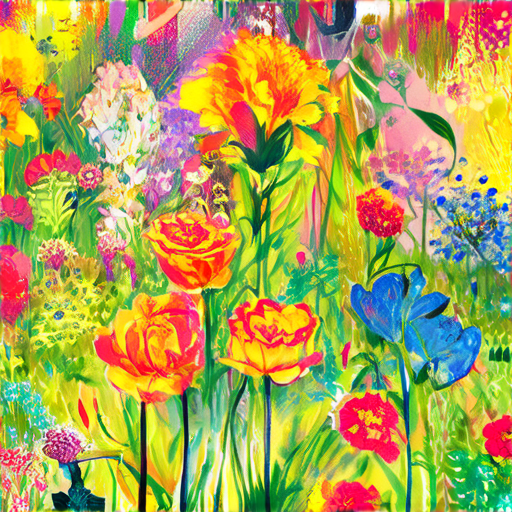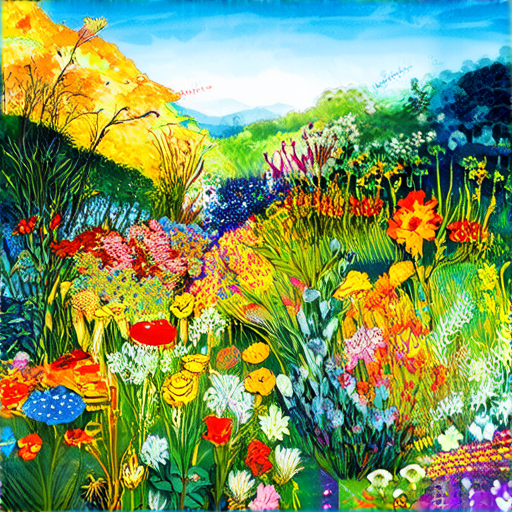Discover the world of creative art ideas, where imagination knows no bounds and self-expression reigns supreme. From innovative drawing ideas for kids to artistic projects for adults, we’ll explore the diverse realm of creative art, providing inspiration and guidance for individuals of all ages and skill levels. With a plethora of fun and easy art ideas, from preschool art projects to complex adult art projects, our comprehensive guide will unlock your full potential as an artist, helping you to unleash your creativity and bring your unique vision to life.
Whether you’re looking for creative art ideas for beginners, interesting drawing ideas, or simply seeking new ways to express yourself through art, our expert advice and insightful tips will empower you to take your artistic journey to new heights. So why wait? Dive into the wonderful world of creative art ideas today and discover a universe of possibilities waiting to be explored!

The 5 Creative Arts
The concept of creative arts encompasses a diverse array of disciplines that express human imagination, creativity, and innovation through various mediums and forms of expression. These artistic endeavors play a vital role in enriching our lives, fostering cultural diversity, and promoting emotional connection.
Visual Arts
Visual arts comprise painting, drawing, sculpture, printmaking, and photography, which utilize various techniques and materials to convey emotions, ideas, and stories. These art forms have been an integral part of human history, allowing artists to capture moments, evoke feelings, and challenge societal norms.
Performing Arts
Performing arts encompass dance, theater, music, and other live performances that engage audiences through movement, sound, and drama. These artistic expressions bring people together, create shared experiences, and provide opportunities for self-expression and social commentary.
Literary Arts
Literary arts include writing, storytelling, journalism, and poetry, which utilize language to convey thoughts, emotions, and ideas. These written works offer a platform for authors to share their perspectives, explore complex themes, and connect with readers worldwide.
Cinematography and Film
Cinematography and film represent a unique blend of visual arts, performing arts, and technical skills. They allow creators to tell stories, evoke emotions, and showcase human experiences through moving images, captivating audiences globally.
Digital Media and Animation
Digital media and animation incorporate computer-generated imagery, special effects, and interactive technologies to produce immersive experiences. These emerging art forms continue to push boundaries, inspire innovation, and redefine the way we consume and interact with creative content.
- These five creative arts not only reflect humanity’s innate desire for self-expression but also contribute significantly to our cultural heritage.
- By exploring and appreciating these diverse artistic disciplines, individuals can gain a deeper understanding of themselves, others, and the world around them.
- Embracing the creative arts can foster personal growth, promote empathy, and encourage social change.
- The intersection of technology and art has given rise to innovative fields like virtual reality, augmented reality, and game development.
- As the creative arts continue to evolve, they remain an essential aspect of human experience, connecting us across cultures, generations, and geographical boundaries.
Unlocking Creative Art Ideas
Exploring New Sources of Inspiration
To spark creativity and gain original ideas for drawing, consider the following methods:
- Observe Nature
- Explore Different Cultures
- Study Famous Artists
- Experiment with Various Mediums
- Practice Freely
Stimulating Your Imagination
* Engage in activities that stimulate your imagination, such as reading, traveling, or trying new hobbies.
* Ask yourself questions about the world around you, like “What if…”, “Why not…”, or “How might…”.
Developing Your Skills
* Set aside time each day to practice drawing and experimenting with different techniques.
* Learn from others by attending workshops, classes, or online tutorials.
* Analyze the work of other artists and understand what makes their pieces unique.
Embracing Constraints
* Give yourself limitations, such as working within a specific color palette or using only primary shapes.
* Challenge yourself to create something new every day, even if it’s just for a few minutes.
Finding Inspiration in Unexpected Places
* Look to unexpected sources, such as dreams, music, or conversations with strangers.
* Keep a sketchbook or journal to record observations and ideas throughout the day.
By incorporating these methods into your artistic routine, you’ll be well on your way to unlocking creative art ideas and developing your skills as a drawer.
The Easiest Art to Master
Drawing is often considered one of the most accessible art forms due to its minimal requirements, making it an ideal starting point for beginners. With just a pencil and paper, anyone can begin learning the basics of drawing, allowing for rapid progress and development.
Key Characteristics of Easy-to-Learn Art Forms
- Minimal equipment required
- Simple techniques and methods
- Flexibility in creative expression
- Opportunities for immediate feedback and improvement
Why Drawing Stands Out as an Easy Art Form
Drawing allows individuals to express themselves creatively while honing essential skills such as observation, proportion, and perspective. As a beginner, mastering basic drawing techniques enables learners to build confidence and develop a solid foundation for further artistic exploration.
Other Art Forms Considered Easy to Master
- Painting: While requiring more materials than drawing, painting offers a similar sense of creative freedom and flexibility.
- Photography: Capturing moments and manipulating images through editing software makes photography an accessible art form for those interested in visual storytelling.
- Collage: Combining various materials and textures creates a unique medium for self-expression and experimentation.
Tips for Mastering Any Art Form
- Set achievable goals and practice consistently
- Seek constructive feedback from peers or mentors
- Experiment with different styles and mediums
- Emphasize technique over perfection

Creating Unique Artwork: A Comprehensive Guide
Developing a distinctive artistic style requires experimentation, practice, and patience.
Step 1: Explore Different Mediums and Techniques
- Experiment with various art materials, such as paints, inks, and colored pencils.
- Try different techniques, like layering, blending, and texture creation.
- Observe how each medium responds to your touch and adapt accordingly.
Step 2: Study the Work of Other Artists
- Visit museums, galleries, and exhibitions to analyze the styles of renowned artists.
- Study the composition, color palette, and brushstrokes used in their works.
- Identify common themes, motifs, and emotions conveyed through their art.
Step 3: Develop Your Personal Vision
- Reflect on your inspirations, passions, and life experiences.
- Define your artistic goals and values.
- Create a visual journal or sketchbook to document your progress and ideas.
Step 4: Refine Your Craft
- Practice regularly to hone your skills and build confidence.
- Seek feedback from peers, mentors, or online communities.
- Continuously challenge yourself to try new things and take risks.
Step 5: Embrace Experimentation and Failure
- View failure as an opportunity to learn and grow.
- Embrace the unknown and be open to unexpected outcomes.
- Keep a record of your experiments and mistakes to track your progress.
Step 6: Cultivate Your Unique Voice
- Integrate your personal style into every piece you create.
- Stay true to your vision and artistic voice.
- Be willing to evolve and adapt over time.
Discovering Your Unique Art Style
Developing a distinctive art style can be a challenging yet rewarding process.
Understanding the Importance of Art Style
- Your art style serves as a reflection of your creativity and personal vision.
- A well-defined style can help you stand out in the art world and attract potential clients or collectors.
- Exploring different styles can also aid in discovering new techniques and mediums.
Identifying Key Elements of Your Art Style
- Color Palette: Analyze the colors you consistently use in your artwork.
- Composition: Examine the arrangement of shapes, forms, and negative space in your pieces.
- Line Work: Consider the types of lines you employ, such as hatching, cross-hatching, or stippling.
- Texture and Pattern: Identify recurring textures and patterns in your work.
Exploring Influences and Inspiration
- Artistic Movements: Research various art movements, such as Impressionism, Cubism, or Abstract Expressionism.
- Artists and Styles: Study the works of artists who share similarities with your desired style.
- Cultural and Personal References: Incorporate elements that reflect your cultural background, interests, or personal experiences.
Practicing and Refining Your Style
- Experimentation: Regularly try new techniques, mediums, and styles to broaden your creative horizons.
- Feedback and Critique: Seek constructive feedback from peers, mentors, or online communities to refine your skills.
- Consistency: Continuously produce artwork that aligns with your evolving style, allowing you to develop a cohesive body of work.

The Most Unique Form of Art
The concept of “most unique” can be subjective, as different cultures and individuals may have varying perspectives on what constitutes exceptional art. However, some forms of art stand out due to their distinct characteristics, historical significance, and cultural relevance. Here are five examples of unique global art forms:
- Mudcloth Art (West Africa): Mudcloth art originated in West Africa, particularly among the Dogon people of Mali. These vibrant textiles feature intricate designs made from natural dyes, symbolizing the connection between nature and human culture.
- Shadow Puppetry (Southeast Asia): Shadow puppetry has been a staple of Southeast Asian entertainment for centuries. Using hand-carved puppets and light sources, artists create immersive stories that explore mythology, folklore, and social issues.
- Thangka Painting (Tibet): Thangkas are traditional Tibetan paintings that depict Buddhist deities, mythological creatures, and sacred landscapes. These intricate works of art often incorporate gold leaf, silk, and other materials to convey spiritual messages.
- Kaleidoscope Art (Greece): In ancient Greece, artisans created kaleidoscopic patterns using glass, metal, and other materials. These colorful designs were often used to adorn jewelry, pottery, and other decorative items.
- Sand Art (Middle East): Sand art, also known as “dune art,” has been practiced in the Middle East for thousands of years. Skilled artists shape and arrange sand into elaborate designs, often depicting animals, plants, and abstract patterns.
These unique art forms not only showcase the creativity and skill of their practitioners but also provide a window into the cultural heritage and traditions of their respective regions. By exploring these lesser-known art styles, we can gain a deeper appreciation for the diversity and richness of artistic expression around the world.

0 Comments